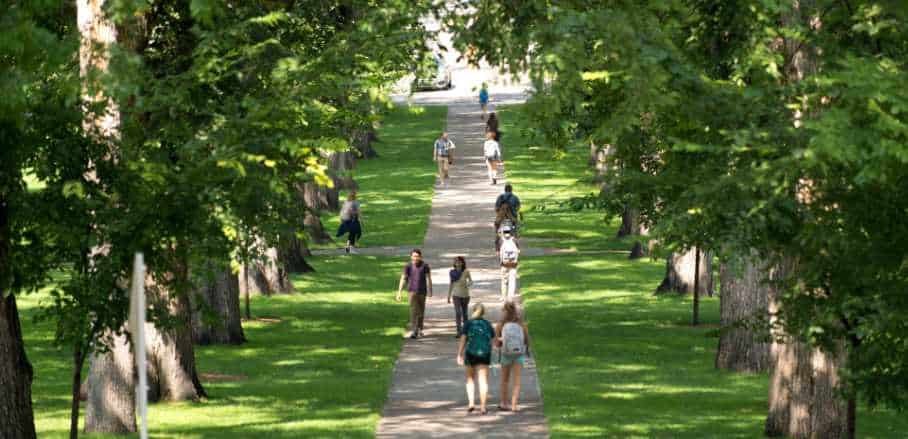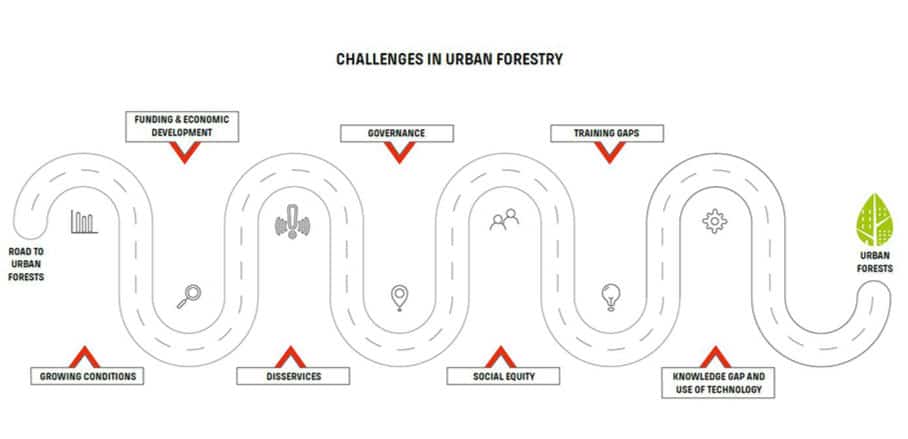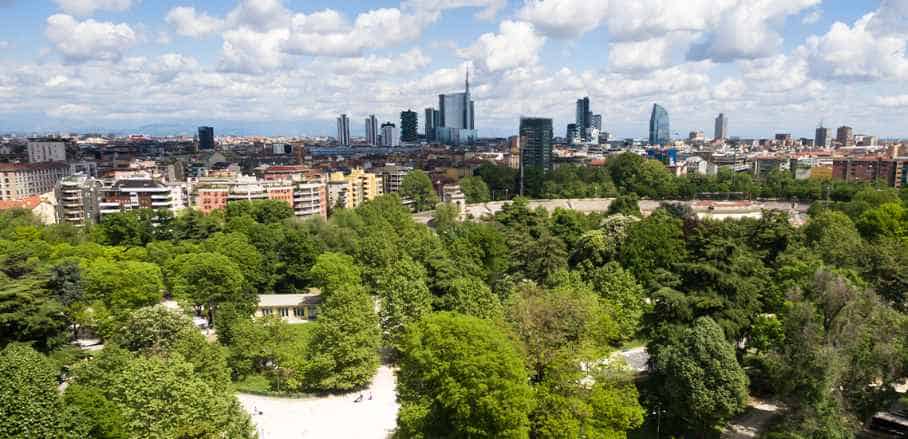Urban Forestry – How Innovative Approaches Can Help Reach the SDGs
Urban Forestry can help meet the Sustainable Development Goals (SDGs) – if its challenges are addressed the right way. Florencia Florido on a new report discussing inventive paths to implement Urban Forestry within European cities.
Aiming to fill the cities of Europe with trees and help overcome socio-environmental challenges through sustainability is no simple task. It requires innovative solutions for planning, designing, implementing, and managing urban forests. Moreover, an interdisciplinary perspective encompassing such forests’ social, ecological, cultural, and economic aspects is vital, if cities are to make the most of the potential benefits trees offer. In September, Uforest, an Erasmus+ project, led by CREAF and the Autonomous University of Barcelona (UAB) published a report on innovation in urban forestry, entitled Blueprint for Innovation in Urban Forestry.
“This report helps to situate urban forestry as a forward-looking discipline, identifying opportunities for and obstacles to the introduction of new initiatives and defining the innovation processes that lead to their materialisation.” Joan Pino Vilalta, director of CREAF and Uforest member

The report features an analysis of 20 case studies from around Europe, including public, private, and public-private sector initiatives alike. These case studies were selected for their scope and their innovation capacity when dealing with the challenges of urban forestry and meeting the Sustainable Development Goals (SDGs), integrating areas as diverse as urban planning, forest ecology, socioeconomics, and information as well as communication technologies.
Challenges and Opportunities for Innovation in Urban Forestry
According to the DPSIR model adopted by the European Environment Agency, any process, outcome or creative mindset in response to a problem – in other words, any innovation – stems from a conflict that acts as a driving force behind it. With that in mind, the report identifies the seven main challenges in urban forestry – – as drivers of innovation. In a local ecological, social, cultural, and economic context, those challenges act as springboards to achieve the global SDGs.
For instance, one of the most pressing issues is achieving environmental justice, accessibility, and inclusivity, which means ensuring social equity in terms of accessing healthy green areas. Urban forest planning should distribute vegetation evenly and facilitate physical access as well as a suitable infrastructure for people with reduced mobility or disabilities. Moreover, it should consider other social, economic, or technological barriers that prevent marginalised or stigmatised citizens from enjoying these areas. This especially relates to the exclusion of homeless people from urban forests – where they find valuable places to socialise, rest and be at peace with nature. In this sense, innovation for social equity is aimed at solving social concerns related to urban vegetation, encompassing solutions that can range from raising awareness about the purpose of urban forests and the challenges they face, promoting food security with edible landscapes or ensuring housing stability with anti-displacement policies or equitable development planning.

Challenges in urban forestry to which the case studies offer solutions © Uforest
The study shows that 90 per cent of the case studies analysed offer solutions to the challenge of funding and economic development, which covers aspects such as diversifying funding, encouraging employment, promoting a forest bioeconomy, using low-cost systems, and developing professionalism. Nonetheless, the cost-benefit ratio of the ecosystem services they offer has yet to be determined. Lower down the scale, fewer of the case studies address the challenge of governance, so there are still opportunities to work on overcoming tensions and contradictions between different urban social groups. Furthermore, none of the case studies provides solutions to the challenge of disservices, for example, the negative effects of urban forests, or to the issues of green gentrification and displacement, which are aspects of the challenge of social equity. Thus, there is great potential for innovation in that regard.
Urban Forestry’s Impact on the SDGs
As far as the SDGs are concerned, 100 per cent of the case studies analysed are in line with SDG 15 – life on land. In fact, urban forestry projects usually involve tree-planting activities, the conservation of biodiversity, sustainable forest management, the restoration of degraded soil, and/or the removal of alien plant species. Additionally, many of the case studies tackle aspects of environmental justice, such as accessibility to green areas and raising awareness of the climate crisis. This serves SDG 11 (sustainable cities and communities) and SDG 13 (climate action). At the bottom of the list, there are SDGs 2, 3, 4 and 6, which respectively target zero hunger, good health and well-being, quality education, and clean water and sanitation. None of the case studies addresses SDG 1, 5, 7, 10, 14, 16 or 17, leaving scope for work on each of them.
Lastly, the report observes that innovation in urban forestry is mainly incremental. In other words, most of the case studies involve small improvements to pre-existing solutions to adapt them to each context’s specific circumstances. That opens a range of opportunities for the development of processes, outcomes, and innovative mindsets of a complementary, radical or disruptive nature.
- Urban Forestry – How Innovative Approaches Can Help Reach the SDGs - 6. December 2022
